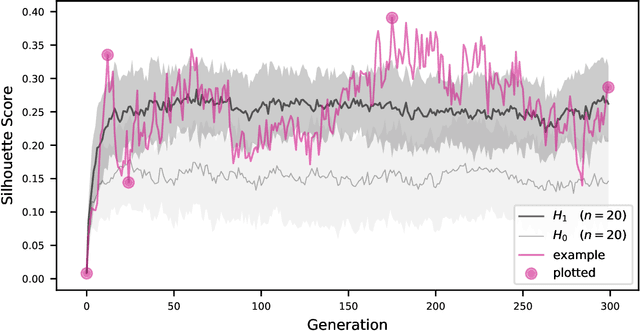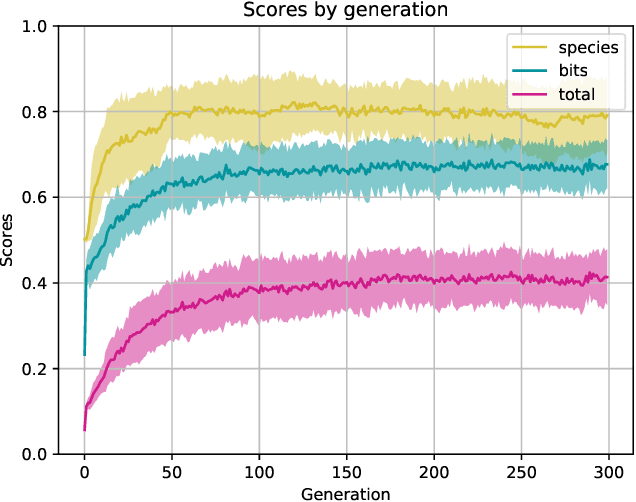An artifcial life approach to studying niche differentiation in soundscape ecology
Paper and Code
Jul 30, 2019



Artificial life simulations are an important tool in the study of ecological phenomena that can be difficult to examine directly in natural environments. Recent work has established the soundscape as an ecologically important resource and it has been proposed that the differentiation of animal vocalizations within a soundscape is driven by the imperative of intraspecies communication. The experiments in this paper test that hypothesis in a simulated soundscape in order to verify the feasibility of intraspecies communication as a driver of acoustic niche differentiation. The impact of intraspecies communication is found to be a significant factor in the division of a soundscape's frequency spectrum when compared to simulations where the need to identify signals from conspecifics does not drive the evolution of signalling. The method of simulating the effects of interspecies interactions on the soundscape is positioned as a tool for developing artificial life agents that can inhabit and interact with physical ecosystems and soundscapes.
 Add to Chrome
Add to Chrome Add to Firefox
Add to Firefox Add to Edge
Add to Edge